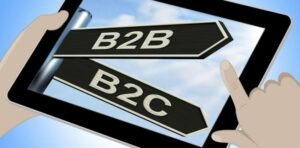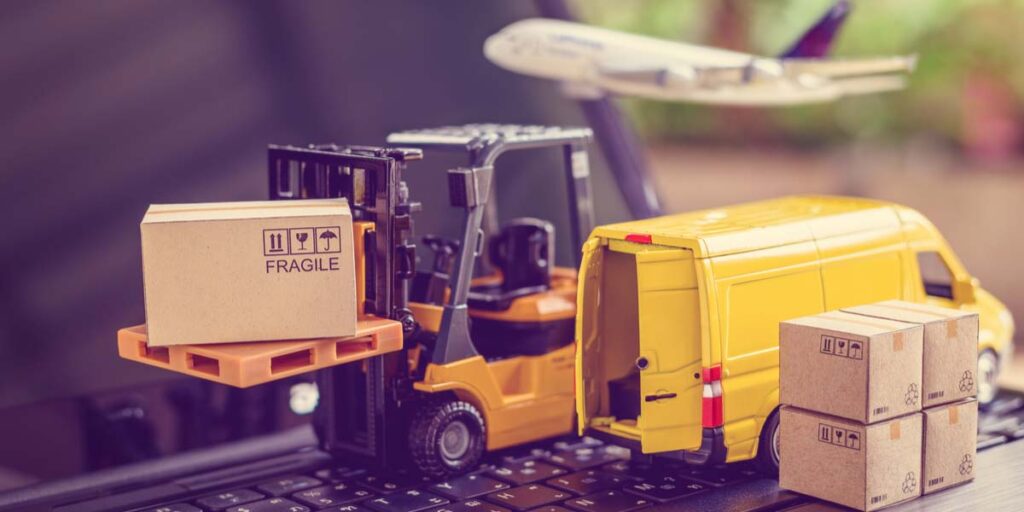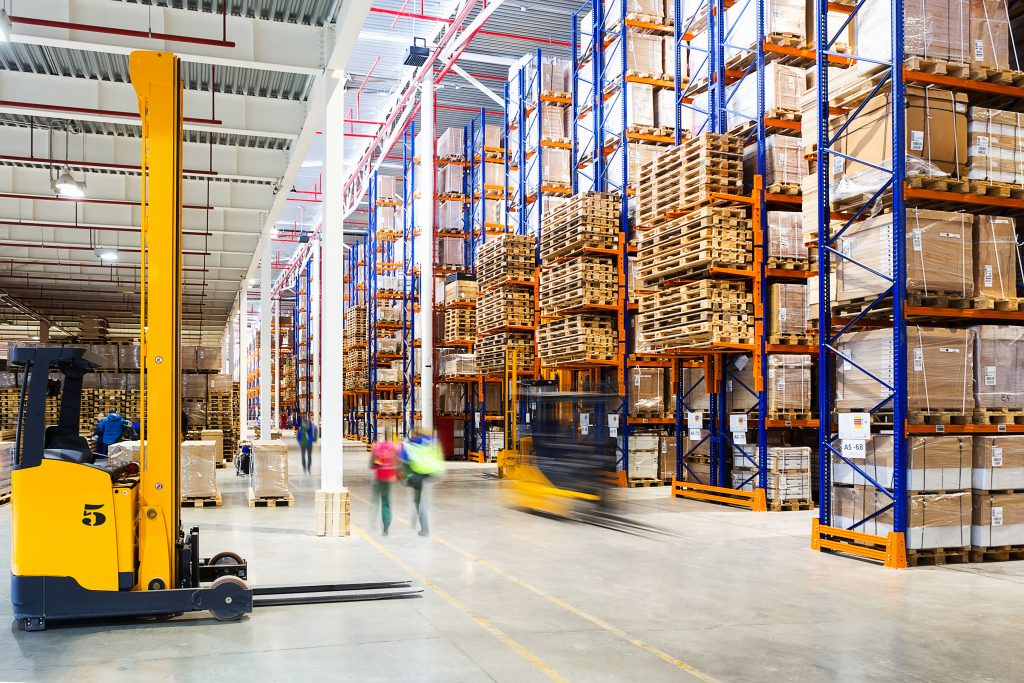The Key Difference Between B2B and B2C Order Fulfillment
Business-to-business (B2B) and business-to-consumer (B2C) enterprises sell their products to different audiences, requiring different order fulfillment processes. Understanding the differences between B2B and B2C order fulfillment is essential for any eCommerce business. In this blog post, we’ll explore the key differences between B2B and B2C order fulfillment so you can ensure your business is set up for success. We’ll look at common challenges, best practices, and strategies to streamline your processes.

What Is B2B Order Fulfillment?
B2B order fulfillment is receiving, processing, and delivering orders from one business to another. It generally transports a higher volume of orders to a different recipient company. In this way, they can stock up in advance.
B2B fulfillment center is dedicated to providing quick and reliable order delivery service. Due to businesses are cooperated with other companies, they generally are expected to save costs and increase the efficiency of the fulfillment services.
B2B fulfillment services play an essential role in a business’s ability to complete orders timely. The service provider needs to follow specific instructions, such as SKU labeling, shipment details, packing request, and palletizing, to keep the fulfillment accurate and timely. The delay or any other incident will damage the seller’s reputation, including loss of customers, refunds, or penalties. The global B2B fulfillment services may be affected by trade barriers, such as taxes, quotas, subsidies, and shipping levies.
More and more business use WMS to deal with the B2B fulfillment service to minimize mistakes, improve efficiency and keep all order information and shipping data in real-time with their suppliers.
What Is B2C Order Fulfillment?
B2C order fulfillment is filling and delivering orders placed by customers through a company’s e-commerce storefront. In most cases, B2C orders are shipped directly from the retailer’s warehouse to the customer’s door. B2C order fulfillment is more straightforward. There are no bulk shipments for B2C fulfillment service.
B2C order fulfillment centers have fewer regulations to follow. They only need to focus on delivery time and customer satisfaction. Typically, they provide shipping service and order tracking services. They should ensure all the orders are packed and shipped timely and accurate. Most warehouses offer additional services, such as labeling, arranging promotion cards, and returning services.
Generally, this kind of fulfillment service requests the warehouse to ship the package with the accurate document, damage-free, quickly, mainly on the same day as the order buying time. Any errors during order fulfillment can lead to bad reviews, additional costs, and returns.
Moreover, B2C request the WMS integrate with more shopping carts and shipping carrier to Synchronize order data timely and save shipping fee.
Considering the character of B2C order fulfillment, the eCommerce business always needs to ensure they have enough inventory to meet customer demand. Nothing frustrates customers more than canceling their order because the product is out of stock. Please choose a shipping method that meets their customers’ needs. Offering expedited shipping options can be a great way to differentiate the business from the competition. Moreover, Automated order picking and packing can help increase efficiency and accuracy while reducing labor costs.

What Is The Difference Between B2B and B2C Order Fulfillment?
Process: B2B fulfillment typically involves multiple steps and touchpoints, while B2C fulfillment is usually simpler and more streamlined. As a result, B2B order fulfillment requires a more sophisticated approach and may involve multiple parties, including manufacturers, distributors, and logistics providers. For example, a typical B2B order might include receiving an order from a customer, contacting the supplier to procure the products, shipping the products to the customer’s site, and then following up to ensure that the products were received and installed correctly. In contrast, a typical B2C order might involve receiving an order from a customer, picking the products from inventory, packing them for shipping, and then shipping them directly to the customer’s home.
Requirement: B2B orders often require customization or another special handling, while most B2C orders do not. For example, a business might need to have its logo printed on a product before it ships, or it might need to ship products to multiple locations within one order. In contrast, most B2C orders are for standard products that can be quickly shipped without special handling.
Volume: B2C orders are generally smaller in quantity and value and are shipped to residential addresses. B2B orders, on the other hand, are typically larger in quantity and value and are sent to commercial addresses. Because of these differences, B2C order fulfillment is often more complex and expensive than B2B fulfillment.
Cost: B2B orders are usually much more complex than B2C orders, as they involve multiple products and require custom packaging and shipping. It means that they often take longer to fulfill and may be more expensive to ship.B2C orders, on the other hand, is typically much simpler and can be fulfilled more quickly and cheaply. It is because they usually involve only a single product and do not require custom packaging or shipping.
How To Overcome The Challenges Of B2B Order Fulfillment
B2B order fulfillment can help businesses save on inventory and warehousing costs. It can also lead to faster turnaround times and allow companies to manage their supply chains better. However, In many B2B order fulfillment cases, orders are not placed by consumers but by businesses that resell products to other companies or consumers. As a result, B2B order fulfillment must consider the needs of both the business and the end customer. in addition, B2B customers often have higher expectations for service and delivery than B2C customers. Companies must carefully consider their fulfillment options to ensure that they can meet the needs of their B2B customers.
B2B order fulfillment presents its own unique set of challenges that can be difficult to overcome. The good news is, with proper planning and execution, these challenges can be overcome relatively easily. Here are a few tips on how to do just that:
1. Have a clear understanding of your product mix and customer demands – This will help you better forecast inventory needs and plan for seasonality or spikes in demand.
2. Streamline your order management process – A streamlined process will help you avoid errors and delays in fulfilling orders.
3. Utilize technology to your advantage – Many software solutions can help you automate and optimize your order fulfillment process.
4. Partner with a reliable 3PL provider – An excellent 3PL partner can provide the necessary resources and expertise to help you overcome the challenges of B2B order fulfillment. Choosing an experienced fulfillment partner like ShipA2Z will provide you with the best solution.
By following these tips, you can overcome the challenges of B2B order fulfillment and keep your customers happy.
Conclusion
As you can see, the critical difference between B2B and B2C order fulfillment is the type of customer. It’s essential to recognize that both orders require careful planning and execution to ensure successful outcomes. By understanding these differences between B2B and B2C fulfillment processes, companies can develop strategies to optimize their operations for maximum efficiency.
Related Articles

The Key Difference Between B2B and B2C Order Fulfillment

How To Make The Best Use Of A Pick & Pack Fulfillment Company